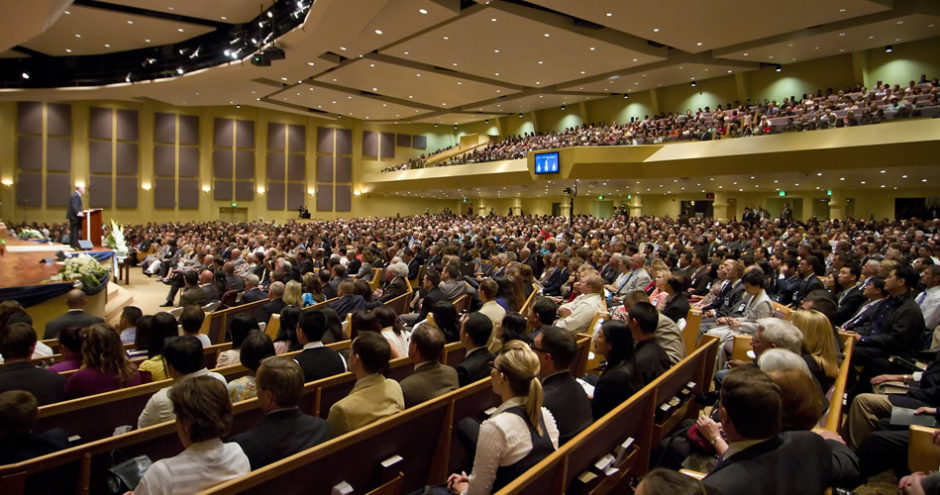Thirty-eight years ago I asked God for guidance during a particularly difficult time in our seminary studies. Harriet and I, Elizabeth and Brian were adjusting to our relocation, my new circumstances as a thirty-year old student, and Harriet’s demanding work schedule. In a critical hour I escaped to Binkley Chapel at Southeastern Baptist Theological Seminary for some moaning and groaning. Three Bible passages were written on the inside cover of my old KJV Bible as a result of those groanings: life verses (Psalm 40:1-3); ministry verses (Ephesians 3:8-9), and a passion verse (Psalm 71:18). Later they were printed, framed, and mounted over my desk for thirty-five years of pastoral service. They’re hanging in front of me right now. They have been consistent Bible truth to navigate the often swift currents of ministry.
The Passion Verse has been the most difficult to implement, especially of late. It reads, as I first learned it, from the New International Version—
Even when I am old and gray, do not forsake me, my God, till I declare your power to the next generation, your mighty acts to all who are to come. Psalm 71:18
For thirty-five years my passion has been to declare God’s might and sovereign power to the next generations. Cool, right?
Yes. But, there’s a complication now. For the first time in human history there are five generations in the home, marketplace and church. Researchers add that now there are four generations trying to function in the workplace. The new twist is that these generational cohorts don’t speak the same language. Imagine this old boomer trying to communicate the history of Israel to ninety-eight teenaged college fresh-persons. I’m thankful it’s the word of God because Scripture translates across every human barrier, whether age, language, nation of origin, or favorite football team. Speaking their language, however, is a test.
Understanding the generations at church has been a significant subtext of this personal passion. Scores of books, research studies, and scholarly articles have been authored to explore the dynamics of mission and ministry in this new world of generational influences in congregational settings. That the millennial cohort has exited church life in contemporary America is one of the most gripping challenges addressed by this body of literature and study. The most recent addition to my generational library is Sticking Points: How to Get 4 Generations Working Together in the 12 Places They Come Apart by Haydn Shaw (Tyndale House, 2013). Shaw has studied the generations for more than twenty years and has identified the twelve most prevalent rough spots that the generations experience when working together in the business world, the non-profit community, or in religious organizations, including the church. While his conclusions and recommendations have been instructive in a broad sense, one particular aspect has been most instructive. It is the process of identifying cuspers to assist in bridging generational transitions. A cusper is identified as an individual who lives on the cusp, or edges of two generations. This person is able to understand the tendencies, thought patterns, values, and expectations of two generations. They can become translators and negotiators when the generations collide at the sticking points identified in Shaw’s research.
As an example, let me mention my wife Harriet. She is a cusper. Born in 1946 she is identified as a leading edge Baby Boomer. She was raised in a house of her older generation mother, grandfather, grandmother, and uncle. In many ways she reflects the generational marks of the Baby Boomer cohort while expressing many of the identify characteristics of the Builder or Traditionalist generation. In mission and ministry during our years of pastoral leadership she has mediated many of the sticking points by understanding both generations. She’s a Baby Boomer all the way. But, she’s more comfortable with older people. In our four church situations she’s preferred teaching opportunities and affiliations with the older members of the church. In many ways she’s helped me to consider the special needs of the Builders when change has been introduced to the church program. Her cusper status has been invaluable in bridging many of the changes necessary for us to minister in this new world.
You’re right, there’s nothing about cuspers in the Bible. There is much, however, about the generation-to-generation relationships that facilitate mission and ministry in the family of faith. Take the emergence of the non-believing younger generation depicted in the Judges 2. After the death of Joshua and his fellow travelers in the Exodus, another generation took the reins of Israel “who did not know the Lord or the work he had done” (Judges 2:10). Evidently there was some generational sticking point that inhibited the communication God had intended between them.
Timothy may be another example. His mentor Paul cautioned him to “Let no one despise you for your youth” (1 Timothy 4:12). Perhaps Timothy needed a cusper or two to help him relate the instruction of the Apostle Paul to the other generations that were part of the believers in Ephesus. He certainly added very intricate instruction about leading the older men and women in the church.
The information age and other societal influences have occasioned sticking points of communication, dress, worship preferences, methods, and other transitional adjustments in the contemporary church. The eternal and unchanging Word of God and the glorious Gospel of Jesus Christ remain the central mission points of God’s church in every generation. Making disciples of all nations is still mission one. The impetus for transmitting this truth from one generation to the next is biblically assigned to the older generation in the church. How this is done today is complicated by the velocity of change so evident in all of culture, the church as well. These advances reveal that the generations actually speak different languages, possess diverse preferences, opinions, and expectations that can stifle mission if not communicated with gracious precision. Knowing the cuspers in the church family may be one important means that can assist churches in navigating these complicated times.
In my mind identifying the cuspers in the church is consistent with our assignment to “equip the saints for the work of ministry, for building up the body of Christ, until we all attain to the unity of the faith and the knowledge of the Son of God” (Ephesians 4:13).





